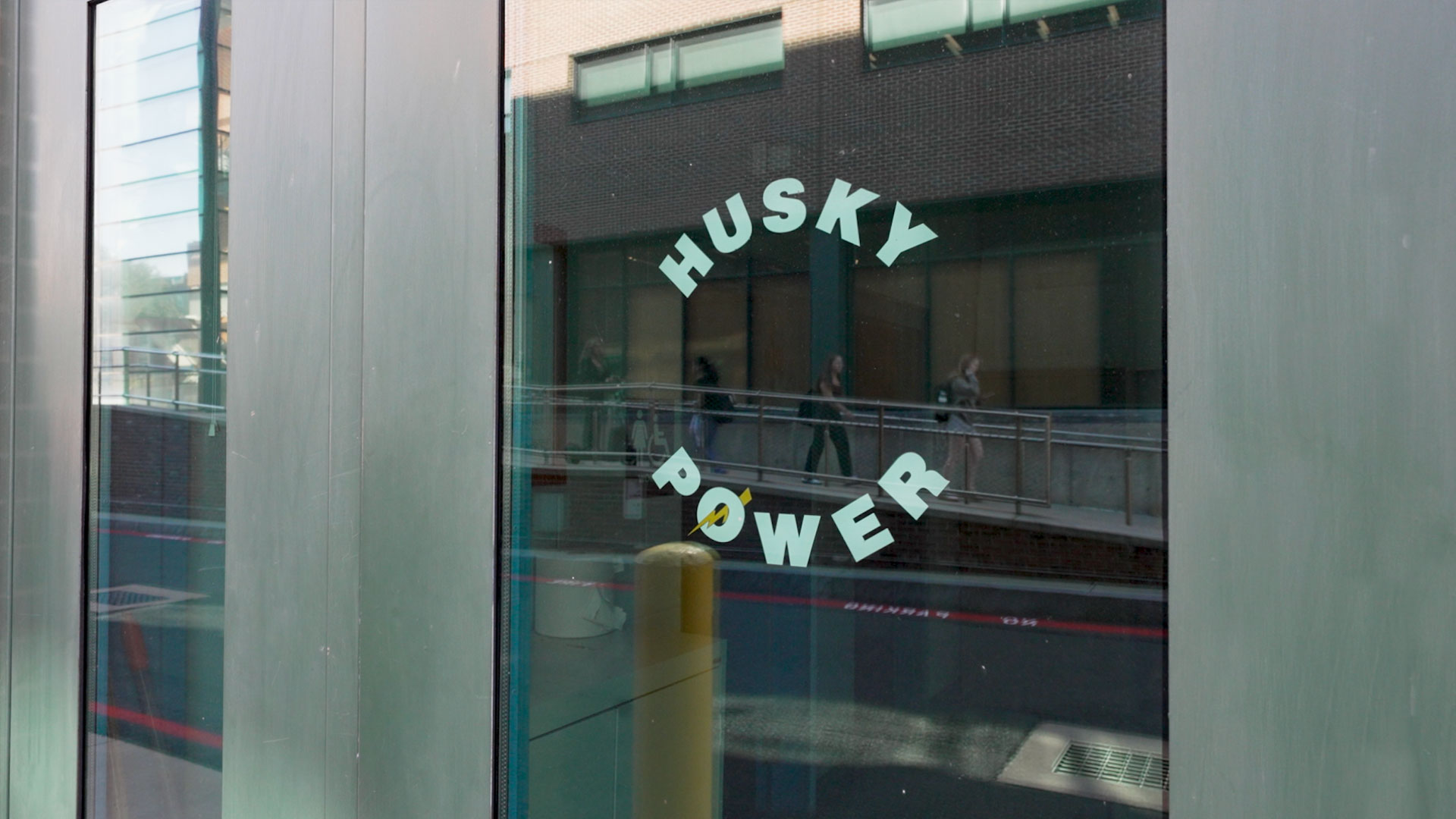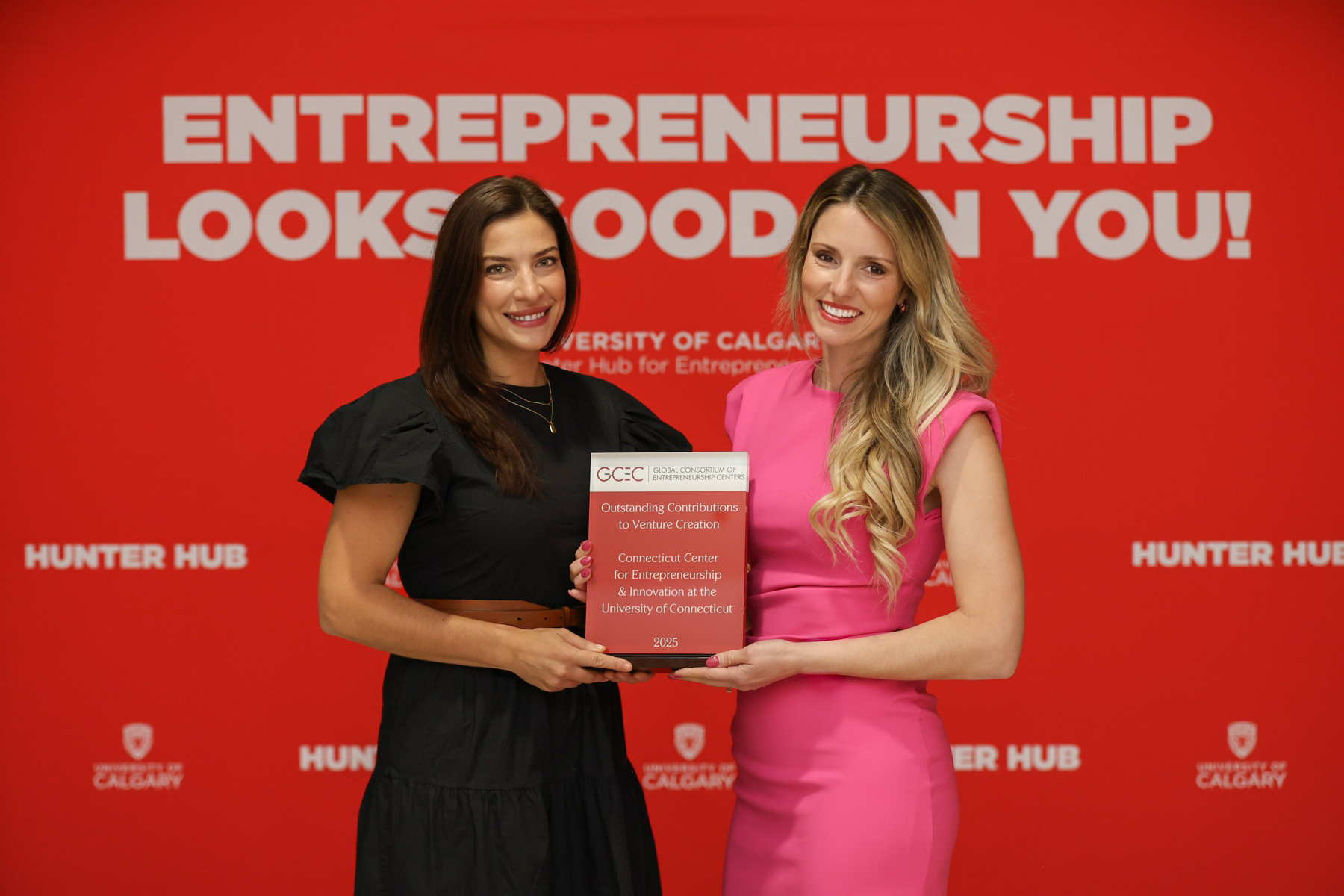
Plants that grow high up in trees, hanging from branches and collecting food and moisture from their surroundings, are usually the stuff of misty rainforests deep in the tropics. But the UConn Ecology and Evolutionary Biology Greenhouse now has a new room dedicated entirely to – and named for – these aerial plants: the Epiphyte Room.
To celebrate the new Epiphyte Room, the EEB Greenhouse will host an open house and dedication on Sunday, April 25 from 10 a.m. to 2 p.m. The open house will be free and open to the public.
Epiphytes, including such well-known varieties as orchids and Spanish moss, grow on other plants and derive their water and nutrients from the air around them. The EEB Greenhouse’s Epiphyte Room has as its centerpiece a 12-foot-tall, three-foot-wide “tree,” made of wire mesh, cork bark, and coconut fibers. The tree and the mesh walls of the greenhouse room are home to hundreds of species of epiphytes, made possible in part by the Connecticut Orchid Society.

Greenhouse Manager Clinton Morse says that the epiphytes, like most plants in the greenhouse, take a bit of study to learn how to grow.
“You can’t just go to a book and learn how to grow most of these plants,” he says. “If we’re lucky, we know where the plant is from. Then we guess our way through it.”
The epiphytes are just a fraction of the about 2,500 species of plants in the greenhouse. Nestled behind the Torrey Life Sciences building, the greenhouse opened in 1960 and is today home to one of the most diverse collections of plants in the Northeast. Morse acquires new plants by trading with other growers around the U.S., and he tries to select plants that will diversify the collection.
“We view the collection from a teaching standpoint,” he says. “We ask: What adaptations does this plant have that would be useful in teaching?”
And he does a good job; the greenhouses are teeming with “weird stuff,” he says. Within the epiphyte room, he points out an Anthurium plant, which has grooves in its several-feet-long leaves to catch rainwater and falling bits of nutrient-rich matter, such as bird droppings. This epiphyte does have roots, but they’re bunched into a large sponge-like mass at the base of the plant, where they absorb the collected water and nutrients.
Nearby, the Nepenthes pitcher plant uses the caps on its pitcher-like leaves to present a sweet nectar, which attracts tree shrews. While the shrews eat away at the nectar, their droppings fall into the pitcher plant, supplying the plant with food.
The greenhouse is also home to a host of economically important plants, such as the kola plant that flavors sodas; vanilla orchids that produce natural vanilla; and teosinte, the precursor to the modern corn plant.
The collection is primarily intended for education and research, with visitors ranging from plant systematics students to horticulture researchers to artists and photographers all making use of the plants. An incoming staff member will also perform horticulture therapy – the practice of creating therapeutic environments using gardens and plants – with people with disabilities. And in the coming months, says Morse, he hopes to collaborate with the School of Pharmacy to establish a medicinal plant garden.
After 32 years of practicing horticulture, Morse says that his inquisitive nature is what keeps his interest. Figuring out how to grow things is still his favorite part of the job.
“When it comes to growing, you win some, and you lose some,” he says. “But there’s always something else out there that I haven’t grown.”
For more information about the greenhouse and the open house, visit the EEB Greenhouse web page or the greenhouse Facebook page.


